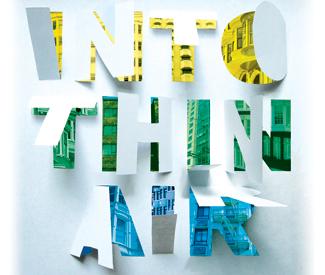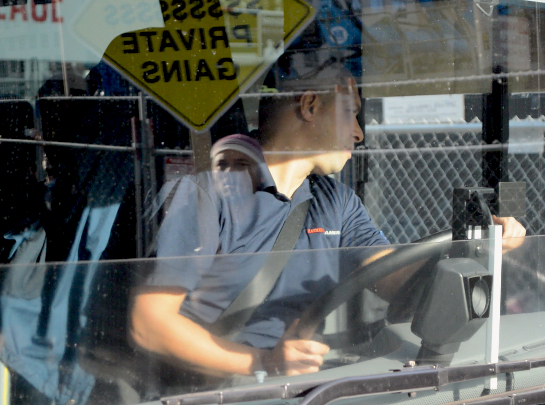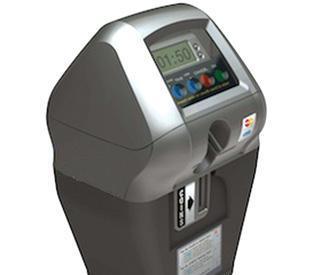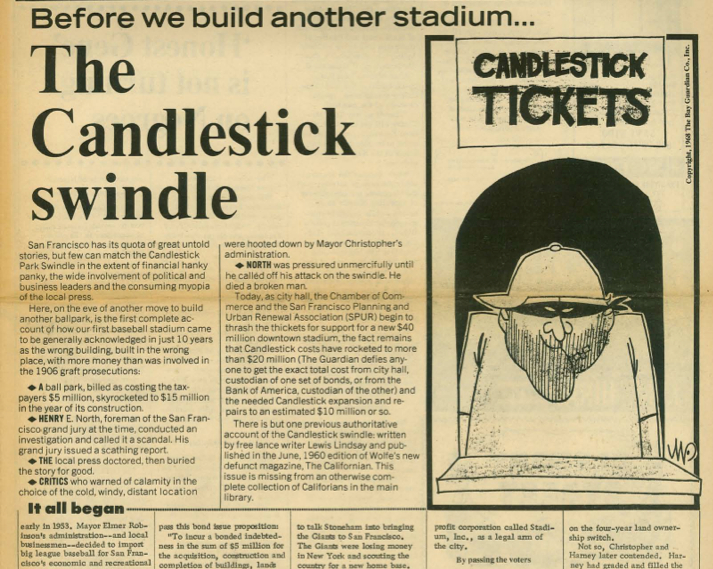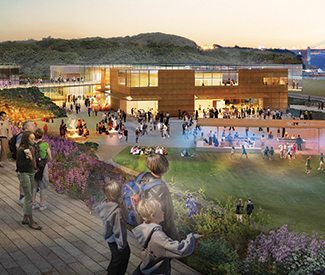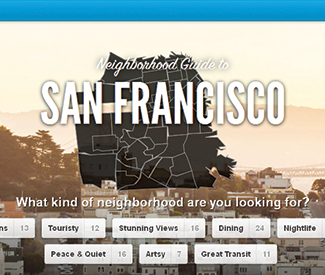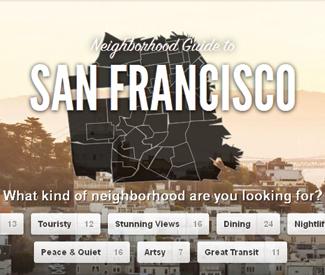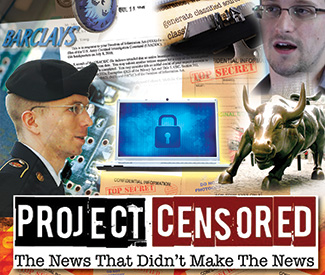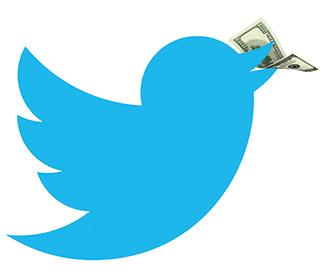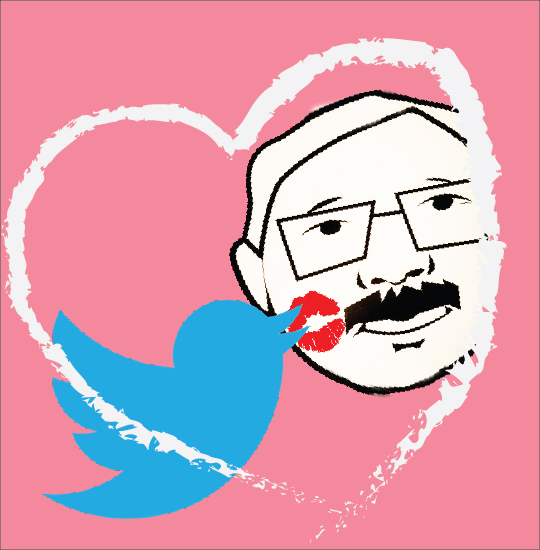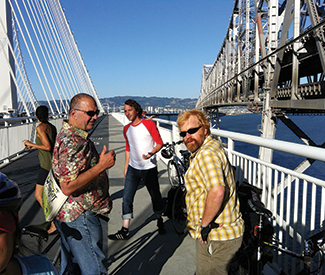WEDNESDAY 4
ROCK
Bottom of the Hill: 1233 17th St., San Francisco. City Deluxe, The Insufferables, RocketShip RocketShip, 9 p.m., $8.
Cafe Du Nord: 2170 Market, San Francisco. Lawson, The Beggars Who Give, Breakaway Patriot, 9 p.m., $10-$12.
The Chapel: 777 Valencia St., San Francisco. King Dude, 9 p.m., $15.
El Rio: 3158 Mission, San Francisco. Red Hands Black Feet, Iconoplasty, The Severely Departed, 8 p.m., $5.
Elbo Room: 647 Valencia, San Francisco. Vinyl Spectrum, The Dandy Lions, 9 p.m., $6.
Hemlock Tavern: 1131 Polk, San Francisco. All Your Sisters, Roses, Here Come the Saviours, 8:30 p.m., $6.
The Knockout: 3223 Mission, San Francisco. 20 Sided Records Compilation IV Release Show #1, w/ One Hundred Percent, Breathing Patterns, Buzzmutt, 9 p.m., $7 (or $10 including CD).
Milk Bar: 1840 Haight, San Francisco. Joshua Cook / The Key of Now, Down & Outlaws, Drivers, Witch Baby, 8:30 p.m., $2.
DANCE
The Cafe: 2369 Market, San Francisco. “Sticky Wednesdays,” w/ DJ Mark Andrus, 8 p.m., free.
Cat Club: 1190 Folsom, San Francisco. “Bondage A Go Go,” w/ DJs Damon, Tomas Diablo, & guests, 9:30 p.m., $5-$10.
Club X: 715 Harrison, San Francisco. “Electro Pop Rocks,” 18+ dance party with Downlink, 9 p.m.
F8: 1192 Folsom St., San Francisco. “Housepitality,” w/ Signal Flow, Aquarius Heaven, Fil Latorre, Nick Gynn, 9 p.m., $5-$10.
Harlot: 46 Minna, San Francisco. “Qoöl,” w/ Dan Sherman, 5 p.m.
The Independent: 628 Divisadero, San Francisco. Chet Faker, Lawrence Rothman, Devonwho, 8 p.m., $13-$15.
Infusion Lounge: 124 Ellis, San Francisco. “Indulgence,” 10 p.m.
Lookout: 3600 16th St., San Francisco. “What?,” w/ resident DJ Tisdale and guests, 7 p.m.
Madrone Art Bar: 500 Divisadero, San Francisco. “Rock the Spot,” 9 p.m., free.
MatrixFillmore: 3138 Fillmore, San Francisco. “Innov8,” 8 p.m.
Monarch: 101 6th St., San Francisco. “Couchsurfing First Wednesdays,” w/ Anthony Mansfield, Sneak-E Pete, more, 8 p.m.
Public Works: 161 Erie, San Francisco. Zomby, DJ Dials, Manitous, 9 p.m., $12-$20.
Q Bar: 456 Castro, San Francisco. “Booty Call,” w/ Juanita More, Joshua J, guests, 9 p.m., $3.
HIP-HOP
Double Dutch: 3192 16th St., San Francisco. “Cash IV Gold,” w/ DJs Kool Karlo, Roost Uno, and Sean G, 10 p.m., free.
Skylark Bar: 3089 16th St., San Francisco. “Mixtape Wednesday,” w/ resident DJs Strategy, Junot, Herb Digs, & guests, 9 p.m., $5.
ACOUSTIC
Cafe Divine: 1600 Stockton, San Francisco. Craig Ventresco & Meredith Axelrod, 7 p.m., free.
Johnny Foley’s Irish House: 243 O’Farrell St., San Francisco. Terry Savastano, Every other Wednesday, 9 p.m., free.
Plough & Stars: 116 Clement, San Francisco. Jeanie & Chuck’s Bluegrass Country Jam, First Wednesday of every month, 9 p.m., free.
Slim’s: 333 11th St., San Francisco. “Both Sides of the Story,” Cody Canada & Jason Boland acoustic song swap, 8 p.m., $16.
JAZZ
Amnesia: 853 Valencia, San Francisco. Gaucho, Eric Garland’s Jazz Session, The Amnesiacs, 7 p.m., free.
Burritt Room: 417 Stockton St., San Francisco. Terry Disley’s Rocking Jazz Trio, 6 p.m., free.
Jazz Bistro At Les Joulins: 44 Ellis, San Francisco. Charles Unger Experience, 7:30 p.m., free.
Le Colonial: 20 Cosmo, San Francisco. The Cosmo Alleycats featuring Ms. Emily Wade Adams, 7 p.m., free.
Oz Lounge: 260 Kearny, San Francisco. Hard Bop Collective, 6 p.m., free.
Pier 23 Cafe: Pier 23, San Francisco. Grant Levin Trio, 6 p.m., free.
Savanna Jazz Club: 2937 Mission, San Francisco. “Cat’s Corner,” 9 p.m., $10.
Top of the Mark: One Nob Hill, 999 California, San Francisco. Ricardo Scales, Wednesdays, 6:30-11:30 p.m., $5.
Zingari: 501 Post, San Francisco. Brenda Reed, 7:30 p.m., free.
INTERNATIONAL
BeatBox: 314 11th St., San Francisco. “Salsa-XS,” queer salsa night, 8 p.m.
Bissap Baobab: 3372 19th St., San Francisco. Timba Dance Party, w/ DJ WaltDigz, 10 p.m., $5.
Boom Boom Room: 1601 Fillmore, San Francisco. Cha-Ching, First Wednesday of every month, 9 p.m., $5.
Cafe Cocomo: 650 Indiana, San Francisco. “Bachatalicious,” w/ DJs Good Sho & Rodney, 7 p.m., $5-$10.
Pachamama Restaurant: 1630 Powell, San Francisco. “Cafe LatinoAmericano,” 8 p.m., $5.
Union Square Park: 333 Post, San Francisco. Kulintronica, 12:30 p.m., free; Los Boleros, 6 p.m., free.
BLUES
Biscuits and Blues: 401 Mason, San Francisco. Southern Hospitality, 8 & 10 p.m., $20.
SOUL
Lexington Club: 3464 19th St., San Francisco. “Secret Lovers,” w/ DJs Ponyboy, Lil MC, Katie Duck, and Durt, First Wednesday of every month, 9 p.m., free.
THURSDAY 5
ROCK
Bottom of the Hill: 1233 17th St., San Francisco. 20 Sided Records Compilation IV Release Show #2, w/ Li Xi, Wild Pack of Canaries, Cannons & Clouds, Mosshead, 9 p.m., $10 including CD.
S.F. Eagle: 398 12th St., San Francisco. Thursday Nite Live: Imperials, Reliics, Cassowary, 9 p.m., $8.
Hemlock Tavern: 1131 Polk, San Francisco. Teepee, Moonbell, Red Traces, 8:30 p.m., $7.
The Knockout: 3223 Mission, San Francisco. The Grannies, Nasalrod, Butt Problems, 9:30 p.m., $7.
Milk Bar: 1840 Haight, San Francisco. Al Lover, Taxes Romero, DSTVV, Vampire Slayer, 8:30 p.m., $7.
Rickshaw Stop: 155 Fell, San Francisco. “Popscene,” w/ Tesla Boy, Night Moves, Queen Kwong, DJs Aaron & Omar, 9:30 p.m., $13-$15.
Slim’s: 333 11th St., San Francisco. Saves the Day, Into It. Over It., Hostage Calm, 8 p.m., $16.
Thee Parkside: 1600 17th St., San Francisco. Terry Malts, Synthetic ID, Pinhead, 9 p.m., $9.
Yoshi’s San Francisco: 1330 Fillmore, San Francisco. The Zombies featuring Colin Blunstone & Rod Argent, Et Tu Brucé, 8 p.m., $39-$60.
DANCE
1015 Folsom: 1015 Folsom St., San Francisco. Anticon Records 15-Year Anniversary, w/ Baths, Why?, Jel, D33J, Daedelus, Doseone, Alias, Serengeti, Odd Nosdam, Sodapop, Low Limit, 10 p.m., $20 advance.
Abbey Tavern: 4100 Geary, San Francisco. DJ Schrobi-Girl, 10 p.m., free.
Audio Discotech: 316 11th St., San Francisco. “Phonic,” w/ Congorock, Ron Reeser, 9:30 p.m.
Aunt Charlie’s Lounge: 133 Turk, San Francisco. “Tubesteak Connection,” w/ DJ Bus Station John, 9 p.m., $5-$7.
BeatBox: 314 11th St., San Francisco. “Jukebox,” w/ DJ Page Hodel, 9 p.m., $10.
The Cafe: 2369 Market, San Francisco. “¡Pan Dulce!,” 9 p.m., $5.
Cat Club: 1190 Folsom, San Francisco. “Throwback Thursdays,” ‘80s night with DJs Damon, Steve Washington, Dangerous Dan, and guests, 9 p.m., $6 (free before 9:30 p.m.).
The Cellar: 685 Sutter, San Francisco. “XO,” w/ DJs Astro & Rose, 10 p.m., $5.
Club X: 715 Harrison, San Francisco. “The Crib,” 9:30 p.m., $10, 18+.
Elbo Room: 647 Valencia, San Francisco. “Afrolicious,” w/ DJs Pleasuremaker, Señor Oz, and live guests, 9:30 p.m., $5-$8.
The EndUp: 401 Sixth St., San Francisco. EDMSF Thursdays, 10 p.m., $10 (free before midnight).
F8: 1192 Folsom St., San Francisco. “Beat Church,” w/ resident DJs Neptune & Kitty-D, First Thursday of every month, 10 p.m., $10.
Infusion Lounge: 124 Ellis, San Francisco. “I Love Thursdays,” 10 p.m., $10.
Madrone Art Bar: 500 Divisadero, San Francisco. “Night Fever,” 9 p.m., $5 after 10 p.m.
MatrixFillmore: 3138 Fillmore, San Francisco. “Fusion,” w/ DJ Big Bad Bruce, 9 p.m., $5.
Mezzanine: 444 Jessie, San Francisco. Gold Fields, Rush Midnight, Honeymooon, 9 p.m., $18-$20.
Monarch: 101 6th St., San Francisco. “Common Ground,” w/ Steve Loria, Andre Lucero, Joey Alaniz, Dino Velvet, Fil Latorre, Greg Yuen, 9 p.m., $10.
Q Bar: 456 Castro, San Francisco. “Throwback Thursday,” w/ DJ Jay-R, 9 p.m., free.
Raven: 1151 Folsom St., San Francisco. “1999,” w/ VJ Mark Andrus, 8 p.m., free.
The Tunnel Top: 601 Bush, San Francisco. “Tunneltop,” DJs Avalon and Derek ease you into the weekend with a cool and relaxed selection of tunes spun on vinyl, 10 p.m., free.
Underground SF: 424 Haight, San Francisco. “Bubble,” 10 p.m., free.
Vessel: 85 Campton, San Francisco. “Base,” w/ Jay Haze, 10 p.m., $5-$10.
HIP-HOP
Eastside West: 3154 Fillmore, San Francisco. “Throwback Thursdays,” w/ DJ Madison, 9 p.m., free.
John Colins: 138 Minna, San Francisco. “The Premiere,” video hip-hop party with VDJ T.D. Camp, First Thursday of every month, 9 p.m., $5.
Park 77 Sports Bar: 77 Cambon, San Francisco. “Slap N Tite,” w/ resident Cali King Crab DJs Sabotage Beats & Jason Awesome, free.
The Parlor: 2801 Leavenworth, San Francisco. “Locals Night Out,” w/ DJ Illy D, 9 p.m., free.
Skylark Bar: 3089 16th St., San Francisco. “Peaches,” w/lady DJs DeeAndroid, Lady Fingaz, That Girl, Umami, Inkfat, and Andre, 10 p.m., free.
ACOUSTIC
Amnesia: 853 Valencia, San Francisco. Sparrows Gate, Assateague, Misisipi Mike & The Midnight Gamblers, 9 p.m., $7.
Cafe Du Nord: 2170 Market, San Francisco. Hiss Golden Messenger, Date Palms, Meg Baird, 8 p.m., $10-$12.
Hotel Utah: 500 Fourth St., San Francisco. Songwriters in the Round with Heather Combs, First Thursday of every month, 8 p.m., $8.
Musicians Union Local 6: 116 Ninth St., San Francisco. San Francisco Singer-Songwriters’ Workshop, hosted by Robin Yukiko, First Thursday of every month, 6:30 p.m., $25 (free for AFM members).
Plough & Stars: 116 Clement, San Francisco. The Shannon Céilí Band, First Thursday of every month, 9 p.m., free.
JAZZ
Blush! Wine Bar: 476 Castro, San Francisco. Doug Martin’s Avatar Ensemble, 7:30 p.m., free.
Bottle Cap: 1707 Powell, San Francisco. The North Beach Sound with Ned Boynton, Jordan Samuels, and Tom Vickers, 7 p.m., free.
Cigar Bar & Grill: 850 Montgomery, San Francisco. Jimmy Grant Quartet, First Thursday of every month, 8 p.m., free.
Le Colonial: 20 Cosmo, San Francisco. Steve Lucky & The Rhumba Bums, 7:30 p.m.
Pier 23 Cafe: Pier 23, San Francisco. Dick Fregulia Group, 7 p.m., free.
The Royal Cuckoo: 3202 Mission, San Francisco. Chris Siebert, 7:30 p.m., free.
Savanna Jazz Club: 2937 Mission, San Francisco. Savanna Jazz Jam with Eddy Ramirez, 7:30 p.m., $5.
Top of the Mark: One Nob Hill, 999 California, San Francisco. Stompy Jones, 7:30 p.m., $10.
Yoshi’s San Francisco: 1330 Fillmore, San Francisco. NaJe, in Yoshi’s lounge, First Thursday of every month, 6:30 p.m., free.
Zingari: 501 Post, San Francisco. Anne O’Brien, First Thursday of every month, 7:30 p.m., free.
INTERNATIONAL
Bissap Baobab: 3372 19th St., San Francisco. “Pa’Lante!,” w/ Juan G, El Kool Kyle, Mr. Lucky, 10 p.m., $5.
Pachamama Restaurant: 1630 Powell, San Francisco. “Jueves Flamencos,” 8 p.m., free.
Verdi Club: 2424 Mariposa, San Francisco. The Verdi Club Milonga, w/ Christy Coté, DJ Emilio Flores, guests, 9 p.m., $10-$15.
Yerba Buena Gardens: Fourth St. & Mission, San Francisco. Essence, 12:30 p.m., free.
REGGAE
Pissed Off Pete’s: 4528 Mission St., San Francisco. Reggae Thursdays, w/ resident DJ Jah Yzer, 9 p.m., free.
BLUES
50 Mason Social House: 50 Mason, San Francisco. Bill Phillippe, 5:30 p.m., free.
Biscuits and Blues: 401 Mason, San Francisco. Lucky Peterson, 8 & 10 p.m., $25.
Jazz Bistro At Les Joulins: 44 Ellis, San Francisco. Bohemian Knuckleboogie, 7:30 p.m., free.
Lou’s Fish Shack: 300 Jefferson St., San Francisco. Little Wolf & The HellCats, 8:30 p.m.
COUNTRY
Atlas Cafe: 3049 20th St., San Francisco. The Country Casanovas, 8 p.m., free.
Brick & Mortar Music Hall: 1710 Mission, San Francisco. Wayne “The Train” Hancock, 9 p.m., $15.
The Independent: 628 Divisadero, San Francisco. Brokedown in Bakersfield, Nocona, 8 p.m., $20.
EXPERIMENTAL
Center for New Music: 55 Taylor St., San Francisco. “The Killer Squirrel and Other Feral Airs,” w/ Amy Foote and Matt Holmes-Linder, 8 p.m., $10-$15.
The Luggage Store: 1007 Market, San Francisco. Aaron Oppenheim, The Hurd Ensemble, 8 p.m., $6-$10.
FUNK
Boom Boom Room: 1601 Fillmore, San Francisco. Delta Nove, 9:30 p.m., $7-$10.
SOUL
50 Mason Social House: 50 Mason, San Francisco. The Reefer Twins, 10 p.m., free.
FRIDAY 6
ROCK
Bottom of the Hill: 1233 17th St., San Francisco. Crüella, The Hormones, The Killer Queens, 10 p.m., $10.
Brick & Mortar Music Hall: 1710 Mission, San Francisco. Buffalo Tooth, Creepers, Mondo Drag, Earthdance, 9 p.m., $5-$7.
Cafe Du Nord: 2170 Market, San Francisco. No, Cosmic Suckerpunch, Great American Cities, 9:30 p.m., $10.
The Chapel: 777 Valencia St., San Francisco. The Shrine, Hot Lunch, Carlton Melton, 9 p.m., $12.
Hemlock Tavern: 1131 Polk, San Francisco. Broncho, Mozes & The Firstborn, Hindu Pirates, 9:30 p.m., $8.
The Independent: 628 Divisadero, San Francisco. Murder by Death, Larry & His Flask, The 4onthefloor, 9 p.m., $16.
Milk Bar: 1840 Haight, San Francisco. “Blues for Pops,” American Cancer Society benefit with The Sam Chase, Bonnie & The Bang Bang, Hibbity Dibbity, 8:30 p.m., $13.
Rickshaw Stop: 155 Fell, San Francisco. Guy Fox, Harper Blynn, The Visibles, 9 p.m., $10.
Sub-Mission Art Space (Balazo 18 Gallery): 2183 Mission, San Francisco. 20 Sided Records Compilation IV Release Show #3, w/ Frozen Folk, Chung Antique, Couches, Quiet Americans, 9 p.m., $7 (or $10 including CD).
Thee Parkside: 1600 17th St., San Francisco. Moses, Western Addiction, Creative Adult, Bad Antics, 9 p.m., $8.
DANCE
1015 Folsom: 1015 Folsom St., San Francisco. “The Afterburn,” w/ ƱZ, Opiuo, An-Ten-Nae, Valentino Khan, Morri$, Filastine, Christian Martin, Lil Silva, Worthy, Ardalan, UltraViolet, Napsty, WolfBitch, many more, 9 p.m., $25-$30 advance.
Amnesia: 853 Valencia, San Francisco. “Brass Tax,” w/ resident DJs JoeJoe, Ding Dong, Ernie Trevino, Mace, First Friday of every month, 10 p.m., $5.
BeatBox: 314 11th St., San Francisco. “Werq,” w/ DJs Rodolfo Bravat & Andrew Gibbons, 10 p.m., $5-$50.
Cafe Flore: 2298 Market, San Francisco. “Kinky Beats,” w/ DJ Sergio, 10 p.m., free.
The Cafe: 2369 Market, San Francisco. “Boy Bar,” w/ DJ Matt Consola, 9 p.m., $5.
Cat Club: 1190 Folsom, San Francisco. “Strangelove: A Tribute to Nine Inch Nails,” w/ DJs Tomas Diablo, Joe Radio, Lexor, and Unit 77, 9:30 p.m., $7 ($3 before 10 p.m.).
The Cellar: 685 Sutter, San Francisco. “F.T.S.: For the Story,” 10 p.m.
DNA Lounge: 375 11th St., San Francisco. “New Wave City: 21-Year Anniversary Party,” w/ DJs Skip, Shindog, Brian Raffi, Andy T, Prince Charming, Donimo, and Alisson Gothz, 9 p.m., $12.
The EndUp: 401 Sixth St., San Francisco. “Fever,” 10 p.m., free before midnight.
F8: 1192 Folsom St., San Francisco. “Vintage,” w/ DJ Toph One & guests, 5 p.m., free.
The Grand Nightclub: 520 4th St., San Francisco. “We Rock Fridays,” 9:30 p.m.
Harlot: 46 Minna, San Francisco. Sébastien Léger, Pedro Arbulu, MFYRS, 9 p.m., $10-$15 advance.
Infusion Lounge: 124 Ellis, San Francisco. “Escape Fridays,” 10 p.m., $20.
Lookout: 3600 16th St., San Francisco. “HYSL,” 9 p.m., $3.
Madrone Art Bar: 500 Divisadero, San Francisco. “Dirty Rotten Dance Party,” w/ Kap10 Harris, Shane King, guests, First Friday of every month, 9 p.m., $5.
Manor West: 750 Harrison, San Francisco. “Fortune Fridays,” 10 p.m., free before 11 p.m. with RSVP.
MatrixFillmore: 3138 Fillmore, San Francisco. “F-Style Fridays,” w/ DJ Jared-F, 9 p.m.
Mezzanine: 444 Jessie, San Francisco. “Future Fridays,” w/ Myndset & Panic City, 9 p.m., free-$20.
Mighty: 119 Utah, San Francisco. “Back2Back2Back,” w/ Mr. V, Marques Wyatt, and David Harness, 10 p.m., $10-$20.
Monarch: 101 6th St., San Francisco. “Smoke N’ Mirrors,” w/ Monika Kruse, Galen, Shiny Objects, Trev Campbell, 9:30 p.m., $10-$20.
Neck of the Woods: 406 Clement St., San Francisco. Penguin Prison (DJ set), Touch Sensitive, Lane 8 (DJ set), 9 p.m., $13-$15.
OMG: 43 6th St., San Francisco. “Release,” 9 p.m., free before 11 p.m.
Powerhouse: 1347 Folsom, San Francisco. “Nasty,” First Friday of every month, 10 p.m., $5.
Public Works: 161 Erie, San Francisco. “Dust Off,” w/ DJ Dan, Sydney Blu, Syd Gris, Matt Kramer, Dex Stakker, Silas Lang, Dulce Vita, 9:30 p.m., $10-$20.
Q Bar: 456 Castro, San Francisco. “Pump: Worq It Out Fridays,” w/ resident DJ Christopher B, 9 p.m., $3.
Ruby Skye: 420 Mason, San Francisco. Digitalism, Nick G, 9 p.m., $20 advance.
Slate Bar: 2925 16th St., San Francisco. “Haçeteria,” w/ Hauser/Quaid, Doc Sleep, Jason P, Smac, Tristes Tropiques, and Nihar, 10 p.m., $5-$7.
Underground SF: 424 Haight, San Francisco. “Bionic,” 10 p.m., $5.
Vessel: 85 Campton, San Francisco. Firebeatz, St. John, Loud Mouth, 10 p.m.
Wish: 1539 Folsom, San Francisco. “Bridge the Gap,” w/ resident DJ Don Kainoa, Fridays, 6-10 p.m., free; “Depth,” w/ resident DJs Sharon Buck & Greg Yuen, First Friday of every month, 10 p.m., free.
HIP-HOP
EZ5: 682 Commercial, San Francisco. “Decompression,” Fridays, 5-9 p.m.
Nickies: 466 Haight, San Francisco. “First Fridays,” w/ The Whooligan & Dion Decibels, First Friday of every month, 11 p.m., free.
ACOUSTIC
50 Mason Social House: 50 Mason, San Francisco. Leland Sundries, Matt Frye, Renee Findley, 7 p.m.
Plough & Stars: 116 Clement, San Francisco. Benjamin Brown, Aaron Ford, 9 p.m.
The Sports Basement: 610 Old Mason, San Francisco. “Breakfast with Enzo,” w/ Enzo Garcia, 10 a.m., $5.
St. Cyprian’s Episcopal Church: 2097 Turk, San Francisco. First Fridays Song Circle, First Friday of every month, 7 p.m., $5-$10.
JAZZ
Beach Chalet Brewery & Restaurant: 1000 Great Highway, San Francisco. Johnny Smith, 8 p.m., free.
Bird & Beckett: 653 Chenery, San Francisco. Don Prell’s SeaBop Ensemble, First Friday of every month, 5:30 p.m., free.
Center for New Music: 55 Taylor St., San Francisco. Best Coast Jazz Composers Series #2: Phillip Greenlief, 7:30 p.m., $12-$15.
Jazz Bistro At Les Joulins: 44 Ellis, San Francisco. Charles Unger Experience, 7:30 p.m., free.
Savanna Jazz Club: 2937 Mission, San Francisco. Savanna Jazz Trio, 7 p.m., $8.
Top of the Mark: One Nob Hill, 999 California, San Francisco. Black Market Jazz Orchestra, 9 p.m., $10.
Zingari: 501 Post, San Francisco. Joyce Grant, 8 p.m., free.
INTERNATIONAL
Cafe Cocomo: 650 Indiana, San Francisco. Taste Fridays, featuring local cuisine tastings, salsa bands, dance lessons, and more, 7:30 p.m., $15 (free entry to patio).
Cigar Bar & Grill: 850 Montgomery, San Francisco. Rumbache, 8 p.m.
Elbo Room: 647 Valencia, San Francisco. Brazilian Independence Day Celebration with Môfo, DJs Lucio K & Carioca, 10 p.m., $10.
Little Baobab: 3388 19th St., San Francisco. “Paris-Dakar African Mix Coupe Decale,” 10 p.m.
Pachamama Restaurant: 1630 Powell, San Francisco. Cuban Night with Fito Reinoso, 7:30 & 9:15 p.m., $15-$18.
The Ramp: 855 Terry Francois, San Francisco. “Salsa Soirée,” w/ DJs Jose Ruiz y Carlitos Way, 6 p.m.
Red Poppy Art House: 2698 Folsom, San Francisco. Lulacruza, 7:30 p.m.
REGGAE
Gestalt Haus: 3159 16th St., San Francisco. “Music Like Dirt,” 7:30 p.m., free.
Showdown: 10 Sixth St., San Francisco. “How the West Was Won,” w/ Nowtime Sound, First Friday of every month, 10 p.m., free.
BLUES
Biscuits and Blues: 401 Mason, San Francisco. Lucky Peterson, 8 & 10 p.m., $25.
Boom Boom Room: 1601 Fillmore, San Francisco. Bill Phillippe, 6 p.m., free.
Lou’s Fish Shack: 300 Jefferson St., San Francisco. Willie G, 8:30 p.m.
Pier 23 Cafe: Pier 23, San Francisco. Pugsley Buzzard, 8 p.m., free.
FUNK
Amnesia: 853 Valencia, San Francisco. Swoop Unit, First Friday of every month, 6 p.m.
Boom Boom Room: 1601 Fillmore, San Francisco. Robert Walter’s 20th Congress, Adrian Hibbs, DJ K-Os, 9:45 p.m., $20 advance.
El Rio: 3158 Mission, San Francisco. Friday Live: Liquid Girlfriend, DJ Emotions, 10 p.m., free.
Make-Out Room: 3225 22nd St., San Francisco. “Loose Joints,” w/ DJs Centipede, Damon Bell, & Tom Thump, 10 p.m., $5.
SOUL
Edinburgh Castle: 950 Geary, San Francisco. “Soul Crush,” w/ DJ Serious Leisure, 10 p.m., free.
The Knockout: 3223 Mission, San Francisco. “Oldies Night,” w/ DJs Primo, Daniel, Lost Cat, friends, First Friday of every month, 10 p.m., $5.
Yoshi’s San Francisco: 1330 Fillmore, San Francisco. All-4-One, 8 & 10 p.m., $28-$35.
SATURDAY 7
ROCK
Amnesia: 853 Valencia, San Francisco. 20 Sided Records Compilation IV Release Show #4, w/ Ash Reiter, Thralls, Upstairs Downstairs, 9 p.m., $7 (or $10 including CD).
Bottom of the Hill: 1233 17th St., San Francisco. Sundowner, Kevin Seconds, Great Apes, The Started-Its, 9 p.m., $10.
Hemlock Tavern: 1131 Polk, San Francisco. Midnite Snaxxx, Youthbitch, Glitz, 9:30 p.m., $6.
Red Devil Lounge: 1695 Polk, San Francisco. State Line Empire, 9 Electric, The Butlers, Amongst Thieves, Ratchet, 9 p.m., $10.
Rickshaw Stop: 155 Fell, San Francisco. Judgement Day, Black Map, Death Valley High, King Loses Crown, 8 p.m., $10.
Sub-Mission Art Space (Balazo 18 Gallery): 2183 Mission, San Francisco. The Ferments, At Our Heels, The Residuals, Survival, Wrath, 7 p.m., $5.
DANCE
BeatBox: 314 11th St., San Francisco. “Bears in the Dark,” w/ DJ Nick Bertossi, 10 p.m., $5-$10.
Cafe Flore: 2298 Market, San Francisco. “Bistrotheque,” w/ DJ Ken Vulsion, 8 p.m., free.
Cat Club: 1190 Folsom, San Francisco. “Leisure,” w/ DJs Aaron, Omar, & Jetset James, First Saturday of every month, 10 p.m., $7.
DNA Lounge: 375 11th St., San Francisco. “Bootie S.F.,” w/ DJ Entyme, DJ Tripp, DJ Fox, Kool Karlo, Haute Toddy, Hubba Hubba Revue performers, more, 9 p.m., $10-$15.
The EndUp: 401 Sixth St., San Francisco. “Play,” w/ Noah Pred, Nick Williams, more, 10 p.m., $15-$20.
Infusion Lounge: 124 Ellis, San Francisco. “Volume,” First Saturday of every month, 10 p.m., $10-$20.
The Knockout: 3223 Mission, San Francisco. “Debaser,” w/ resident DJs EmDee, Jamie Jams, and Stab Master Arson, First Saturday of every month, 10 p.m., $5 (free before 11 p.m. if wearing flannel).
Lookout: 3600 16th St., San Francisco. “Bounce!,” 9 p.m., $3.
Madrone Art Bar: 500 Divisadero, San Francisco. “The Prince & Michael Experience,” w/ DJs Dave Paul & Jeff Harris, First Saturday of every month, 9 p.m., $5.
Mezzanine: 444 Jessie, San Francisco. “Lights Down Low,” w/ Skream, L-Vis 1990, Miracles Club (DJ set), Sleazemore, Richie Panic, Robert Jeffrey, Dabecy, 9 p.m., $22.
Mighty: 119 Utah, San Francisco. “Crush,” w/ Minnesota, Pumpkin, jPod, Fista Cuffs, Zeb Early, Slayers Club, Ma Yeah, 10 p.m., $15-$20.
Monarch: 101 6th St., San Francisco. “No Way Back,” w/ Garth, Conor, Jenö, and Solar, 10 p.m., $5-$10.
Public Works: 161 Erie, San Francisco. “Re-Entry,” w/ Ryan Crosson, Pezzner, PillowTalk (DJ set), Future Boogie, Dax Lee, Anthony Mansfield, Josh Vincent, 9:30 p.m., $10-$20.
Q Bar: 456 Castro, San Francisco. “Homo Erectus,” w/ DJs MyKill & Dcnstrct, First Saturday of every month, 9 p.m., $5.
Ruby Skye: 420 Mason, San Francisco. “World Town,” w/ Daddy’s Groove, Trevor Simpson, 9 p.m., $20 advance.
The Stud: 399 Ninth St., San Francisco. “Go Bang! Celebrates Sylvester,” w/ DJs Paul Goodyear, Sergio Fedasz, and Steve Fabus, 9 p.m., $7 (free before 10 p.m.).
Temple: 540 Howard, San Francisco. Teen Wolf, Cuervo, SwitchBlade, Eddy Santana, Ross.FM, Mario Dubbz, Mr. Brandon, Lee Portal, Mr. Kitt, A2D, 10 p.m., $20.
Underground SF: 424 Haight, San Francisco. “Push the Feeling,” w/ Exray’s, Yalls, Yr Skull, Epicsauce DJs, 9 p.m., $6.
Vessel: 85 Campton, San Francisco. Tiger Records Showcase, w/ Plastik Funk, Pheeko Dubfunk, 10 p.m., $10-$30.
HIP-HOP
John Colins: 138 Minna, San Francisco. “N.E.W.: Never Ending Weekend,” w/ DJ Jerry Ross, First Saturday of every month, 9 p.m., free before 11 p.m.
Milk Bar: 1840 Haight, San Francisco. Ensemble Mik Nawooj, Eliquate, The Go Ahead, DJ Centipede, 8:30 p.m., $10-$12.
Slate Bar: 2925 16th St., San Francisco. “Touchy Feely,” w/ The Wild N Krazy Kids, First Saturday of every month, 10 p.m., $5 (free before 11 p.m.).
ACOUSTIC
Atlas Cafe: 3049 20th St., San Francisco. Craig Ventresco & Meredith Axelrod, Saturdays, 4-6 p.m., free.
Bazaar Cafe: 5927 California, San Francisco. RonDre., 7 p.m.
Brick & Mortar Music Hall: 1710 Mission, San Francisco. Roem & The Revival, Jeff Campbell, The Stages of Sleep, 9 p.m., $10-$15.
The Chapel: 777 Valencia St., San Francisco. “Bluegrass Freak Show,” w/ Supermule, Arann Harris & The Farm Band, T Sisters, 9 p.m., $12-$15.
Make-Out Room: 3225 22nd St., San Francisco. Heidi Alexander, James Finch Jr., 7:30 p.m., $8.
Plough & Stars: 116 Clement, San Francisco. “Americana Jukebox,” w/ The Littlest Birds, The Shelby Foot Three, 9 p.m., $6-$10.
Revolution Cafe: 3248 22nd St., San Francisco. Seth Augustus, First Saturday of every month, 9 p.m., free/donation.
JAZZ
Biscuits and Blues: 401 Mason, San Francisco. Lavay Smith & Her Red Hot Skillet Lickers, 7:30 & 10 p.m., $20.
Jazz Bistro At Les Joulins: 44 Ellis, San Francisco. Bill “Doc” Webster & Jazz Nostalgia, 7:30 p.m., free.
Sheba Piano Lounge: 1419 Fillmore, San Francisco. Charles Unger Experience, First Saturday of every month, 8 p.m.
Yerba Buena Gardens: Fourth St. & Mission, San Francisco. Marcus Shelby Orchestra featuring the Healdsburg Freedom Jazz Choir, world premiere of Blues and the Pursuit of Freedom, 1 p.m., free.
Zingari: 501 Post, San Francisco. Barbara Ochoa, 8 p.m., free.
INTERNATIONAL
1015 Folsom: 1015 Folsom St., San Francisco. “Pura,” 9 p.m., $20.
Cigar Bar & Grill: 850 Montgomery, San Francisco. Fito Reinoso, 8 p.m.
Little Baobab: 3388 19th St., San Francisco. “Paris-Dakar African Mix Coupe Decale,” 10 p.m.
Make-Out Room: 3225 22nd St., San Francisco. “El SuperRitmo,” Latin dance party with DJs Roger Mas & El Kool Kyle, 10 p.m., $5.
Pachamama Restaurant: 1630 Powell, San Francisco. Peña Eddy Navia & Pachamama Band, 8 p.m., free.
The Ramp: 855 Terry Francois, San Francisco. Orquesta La Clave, 5:30 p.m.
Roccapulco Supper Club: 3140 Mission, San Francisco. Brazilian Independence Day Celebration, w/ Danilo Hudson, Sotaque Baiano, Julio Remelexo, Aquarela, DJ Kblo, 9 p.m.
San Francisco Botanical Garden: Martin Luther King Jr., San Francisco. Lulacruza, 5 p.m., $25.
BLUES
Lou’s Fish Shack: 300 Jefferson St., San Francisco. Eldon Brown, 8:30 p.m.
EXPERIMENTAL
Center for New Music: 55 Taylor St., San Francisco. The Memory Table, 8 p.m., $10-$15.
FUNK
Boom Boom Room: 1601 Fillmore, San Francisco. Robert Walter’s 20th Congress, Sal’s Greenhouse, DJ K-Os, 9:45 p.m., $20 advance.
Pier 23 Cafe: Pier 23, San Francisco. Vinyl, 10 p.m., $10.
SKA
Slim’s: 333 11th St., San Francisco. Hepcat, The Champions Inc., The Cover-Ups, The Selecter DJ Kirk, 9 p.m., $24.
SOUL
El Rio: 3158 Mission, San Francisco. “Hard French,” w/ DJs Carnita & Brown Amy, First Saturday of every month, 2 p.m., $7.
Elbo Room: 647 Valencia, San Francisco. “Saturday Night Soul Party,” w/ DJs Lucky, Phengren Oswald, & Paul Paul, First Saturday of every month, 10 p.m., $10 ($5 in formal attire).
The Independent: 628 Divisadero, San Francisco. Cody ChesnuTT, Jarell Perry, DJ Harry Duncan, 9 p.m., $16.
Yoshi’s San Francisco: 1330 Fillmore, San Francisco. All-4-One, 8 & 10 p.m., $35.
SUNDAY 8
ROCK
America’s Cup Pavilion: 27 Pier, San Francisco. NexusRock, 3:30 p.m., free.
Bottom of the Hill: 1233 17th St., San Francisco. Rivals, Dance Party Boys, Belligerator, 8:30 p.m., $8.
Contemporary Jewish Museum: 736 Mission, San Francisco. UnderCover Presents: Bob Dylan’s Highway 61 Revisited, 2 p.m., $15-$20 (includes museum admission).
El Rio: 3158 Mission, San Francisco. Callow, Former Friends of Young Americans, Sweat Lodge, 8 p.m., $5.
Rickshaw Stop: 155 Fell, San Francisco. Nobunny, Colleen Green, The Monster Women, The Shanghais, 8:30 p.m., $12-$15.
Slim’s: 333 11th St., San Francisco. Ed Roland & The Sweet Tea Project, Kingsborough, 8 p.m., $21.
DANCE
Cafe Cocomo: 650 Indiana, San Francisco. “2nd Sunday,” w/ Bad Boy Bill, WhiteNoize, Ralph Berr, Galen, Rooz, Mario Dubbz, David Kim, Bardia F, ThuyVu, Lucas Med, Dan & Glen Hammarstrom, noon, $15 advance.
The Cellar: 685 Sutter, San Francisco. “Replay Sundays,” 9 p.m., free.
The Edge: 4149 18th St., San Francisco. “’80s at 8,” w/ DJ MC2, 8 p.m.
Elbo Room: 647 Valencia, San Francisco. “Dub Mission,” w/ DJ Sep & Maneesh the Twister, 9 p.m., $6 (free before 9:30 p.m.).
The EndUp: 401 Sixth St., San Francisco. “T.Dance,” 6 a.m.-6 p.m.; “The Rhythm Room,” Second Sunday of every month, 8 p.m.; “Sunday Sessions,” 8 p.m.
F8: 1192 Folsom St., San Francisco. “Stamina Sundays,” w/ DJs Lukeino, Jamal, and guests, 10 p.m., free.
Holy Cow: 1535 Folsom, San Francisco. “Honey Sundays,” w/ Honey Soundsystem & guests, 9 p.m., $5.
The Knockout: 3223 Mission, San Francisco. “Sweater Funk,” 10 p.m., free.
Lookout: 3600 16th St., San Francisco. “Jock,” Sundays, 3-8 p.m., $2.
Monarch: 101 6th St., San Francisco. “Stretch Sunday,” w/ Kill Frenzy, Andrew Kelsey, Lisbona, more, 9 p.m., free-$20.
Otis: 25 Maiden, San Francisco. “What’s the Werd?,” w/ resident DJs Nick Williams, Kevin Knapp, Maxwell Dub, and guests, 9 p.m., $5 (free before 11 p.m.).
The Parlor: 2801 Leavenworth, San Francisco. DJ Marc deVasconcelos, 10 p.m., free.
Q Bar: 456 Castro, San Francisco. “Gigante,” 8 p.m., free.
Ruby Skye: 420 Mason, San Francisco. DJ Pauly D, E-Rock, Miles Medina, 9 p.m., $25-$40 advance.
Temple: 540 Howard, San Francisco. “Sunset Arcade,” 18+ dance party with bar games and video arcade, 7 p.m., $5.
HIP-HOP
Boom Boom Room: 1601 Fillmore, San Francisco. “Return of the Cypher,” 9:30 p.m., free.
ACOUSTIC
Brick & Mortar Music Hall: 1710 Mission, San Francisco. Kelley James, Sam Johnson, 8 p.m., $9-$12.
Cafe Du Nord: 2170 Market, San Francisco. Jill Tracy, This Way to the Egress, Vagabondage, 7:30 p.m., $10.
The Chapel: 777 Valencia St., San Francisco. Alela Diane, Vikesh Kapoor, 9 p.m., $15-$18.
Hemlock Tavern: 1131 Polk, San Francisco. Matty Charles, 8:30 p.m., $7.
The Lucky Horseshoe: 453 Cortland, San Francisco. Sunday Bluegrass Jam, 4 p.m., free.
Madrone Art Bar: 500 Divisadero, San Francisco. “Spike’s Mic Night,” Sundays, 4-8 p.m., free.
Neck of the Woods: 406 Clement St., San Francisco. “iPlay,” open mic with featured weekly artists, 6:30 p.m., free.
Pier 23 Cafe: Pier 23, San Francisco. Chris Ford Band, 5 p.m., free.
Plough & Stars: 116 Clement, San Francisco. Seisiún with Darcy Noonan, Richard Mandel, and Jack Gilder, 9 p.m.
St. Luke’s Episcopal Church: 1755 Clay, San Francisco. “Sunday Night Mic,” w/ Roem Baur, 5 p.m., free.
JAZZ
Amnesia: 853 Valencia, San Francisco. Slim Jenkins, Second Sunday of every month, 9 p.m., $7-$10.
Jazz Bistro At Les Joulins: 44 Ellis, San Francisco. Bill “Doc” Webster & Jazz Nostalgia, 7:30 p.m., free.
Madrone Art Bar: 500 Divisadero, San Francisco. “Sunday Sessions,” 10 p.m., free.
Martuni’s: 4 Valencia, San Francisco. Madame Jo Trio, second Sunday of every month, 4-6 p.m., free.
Revolution Cafe: 3248 22nd St., San Francisco. Jazz Revolution, 4 p.m., free/donation.
The Royal Cuckoo: 3202 Mission, San Francisco. Lavay Smith & Chris Siebert, 7:30 p.m., free.
Savanna Jazz Club: 2937 Mission, San Francisco. Vocal Jam with Benn Bacot, 7 p.m., $5.
Yoshi’s San Francisco: 1330 Fillmore, San Francisco. A Tribute to Art Porter & George Howard, w/ Tony Exum Jr. & Dee Lucas, 7 p.m., $21-$25.
Zingari: 501 Post, San Francisco. Barbara Ochoa, 7:30 p.m., free.
INTERNATIONAL
Atmosphere: 447 Broadway, San Francisco. “Hot Bachata Nights,” w/ DJ El Guapo, 5:30 p.m., $10 ($15-$20 with dance lessons).
Bissap Baobab: 3372 19th St., San Francisco. “Brazil & Beyond,” 6:30 p.m., free.
El Rio: 3158 Mission, San Francisco. “Salsa Sundays,” Second and Fourth Sunday of every month, 3 p.m., $8-$10.
Oasis Bar & Grill: 401 California Ave., San Francisco. “El Vacilón,” 4 p.m., $10.
The Ramp: 855 Terry Francois, San Francisco. Grupo da Sete, 5:30 p.m.
Thirsty Bear Brewing Company: 661 Howard, San Francisco. “The Flamenco Room,” 7:30 & 8:30 p.m.
Union Square Park: 333 Post, San Francisco. Tango No. 9, 2 p.m., free.
BLUES
Biscuits and Blues: 401 Mason, San Francisco. Two Tone Steiny & The Cadillacs, 7 & 9 p.m., $15.
Lou’s Fish Shack: 300 Jefferson St., San Francisco. Shad Harris, 4 p.m.
Revolution Cafe: 3248 22nd St., San Francisco. HowellDevine, 8:30 p.m., free/donation.
The Saloon: 1232 Grant, San Francisco. Blues Power, 4 p.m.
Sheba Piano Lounge: 1419 Fillmore, San Francisco. Bohemian Knuckleboogie, 9 p.m., free.
COUNTRY
The Riptide: 3639 Taraval, San Francisco. Joe Goldmark & The Seducers, Second Sunday of every month, 7:30 p.m., free.
Tupelo: 1337 Green St., San Francisco. “Twang Sunday,” 4 p.m., free.
EXPERIMENTAL
Legion of Honor: 100 34th Ave., San Francisco. Soundwave ((6)) SonicLAB: Impressions on Water, w/ Christen Lien, Kriika, 1 p.m., free.
SOUL
Delirium Cocktails: 3139 16th St., San Francisco. “Heart & Soul,” w/ DJ Lovely Lesage, 10 p.m., free.
MONDAY 9
ROCK
Bottom of the Hill: 1233 17th St., San Francisco. Ewert & The Two Dragons, The Family Crest, Steer the Stars, 9 p.m., $10-$12.
Elbo Room: 647 Valencia, San Francisco. Grill Cloth, The Death Medicine Band, Sex Snobs, Jungle Cat, DJ Dahmer, 9 p.m., $5.
The Independent: 628 Divisadero, San Francisco. Sick Puppies, Candlelight Red, Charming Liars, 8 p.m., $22.
Slim’s: 333 11th St., San Francisco. Minus the Bear, Tera Melos, The New Trust, 8 p.m., $25.
DANCE
DNA Lounge: 375 11th St., San Francisco. “Death Guild,” 18+ dance party with DJs Decay, Joe Radio, Melting Girl, & guests, 9:30 p.m., $3-$5.
Milk Bar: 1840 Haight, San Francisco. Molly Nilsson, Strube Jackson, 8:30 p.m., $8.
Q Bar: 456 Castro, San Francisco. “Wanted,” w/ DJs Key&Kite and Richie Panic, 9 p.m., free.
Underground SF: 424 Haight, San Francisco. “Vienetta Discotheque,” w/ DJs Stanley Frank and Robert Jeffrey, 10 p.m., free.
ACOUSTIC
Amnesia: 853 Valencia, San Francisco. The Pick Bluegrass Jam, Second Monday of every month, 6 p.m., free; Toshio Hirano, Second Monday of every month, 9 p.m., free.
Cafe Du Nord: 2170 Market, San Francisco. Denison Witmer, Amy Stroup, Michelle Malone, 7:30 p.m., $12.
The Chieftain: 198 Fifth St., San Francisco. The Wrenboys, 7 p.m., free.
Fiddler’s Green: 1333 Columbus, San Francisco. Terry Savastano, 9:30 p.m., free/donation.
Hotel Utah: 500 Fourth St., San Francisco. Open mic with Brendan Getzell, 8 p.m., free.
Osteria: 3277 Sacramento, San Francisco. “Acoustic Bistro,” 7 p.m., free.
The Saloon: 1232 Grant, San Francisco. Peter Lindman, 4 p.m.
JAZZ
Le Colonial: 20 Cosmo, San Francisco. Le Jazz Hot, 7 p.m., free.
The Union Room at Biscuits and Blues: 401 Mason, San Francisco. The Session: A Monday Night Jazz Series, pro jazz jam with Mike Olmos, 7:30 p.m., $12.
Zingari: 501 Post, San Francisco. Nora Maki, 7:30 p.m., free.
REGGAE
Skylark Bar: 3089 16th St., San Francisco. “Skylarking,” w/ I&I Vibration, 10 p.m., free.
BLUES
Jazz Bistro At Les Joulins: 44 Ellis, San Francisco. Bohemian Knuckleboogie, 7:30 p.m., free.
The Saloon: 1232 Grant, San Francisco. The Bachelors, 9:30 p.m.
EXPERIMENTAL
The Knockout: 3223 Mission, San Francisco. Son Fish; The Electric Noodle; Eyes, Wings, and Many Other Things; Lily Taylor, 9 p.m., $5.
SOUL
Madrone Art Bar: 500 Divisadero, San Francisco. “M.O.M. (Motown on Mondays),” w/ DJ Gordo Cabeza & Timoteo Gigante, 8 p.m., free.
TUESDAY 10
ROCK
Bottom of the Hill: 1233 17th St., San Francisco. That Ghost, Fleeting Trance, Rybalko, 9 p.m., $8.
Cafe Du Nord: 2170 Market, San Francisco. On an On, Hands, Dangermaker, 9 p.m., $10-$12.
DNA Lounge: 375 11th St., San Francisco. Hed PE, Short Fuse, 7:30 p.m., $12-$15.
El Rio: 3158 Mission, San Francisco. Turn Me On Dead Man, Twin Trilogy, Brubaker, 8 p.m., $8.
Hemlock Tavern: 1131 Polk, San Francisco. Diesto, Hellbeard, Bedrücken, 8:30 p.m., $7.
The Independent: 628 Divisadero, San Francisco. Tobacco, Zackey Force Funk, 8 p.m., $13-$15.
The Knockout: 3223 Mission, San Francisco. Mob 47, Koszmar, Replica, Ritual Control, DJ Ken Prank, 9:30 p.m., $8.
Rickshaw Stop: 155 Fell, San Francisco. Bleeding Rainbow, The Love Language, Permanent Collection, 8 p.m., $12.
Sub-Mission Art Space (Balazo 18 Gallery): 2183 Mission, San Francisco. No Bone, Screaming Queens, Lunchlady, This or That, 8 p.m., $5.
DANCE
Aunt Charlie’s Lounge: 133 Turk, San Francisco. “High Fantasy,” w/ DJ Viv, Myles Cooper, & guests, 10 p.m., $2.
MatrixFillmore: 3138 Fillmore, San Francisco. “TRL,” w/ DJ Big Bad Bruce, 10 p.m.
Monarch: 101 6th St., San Francisco. “Soundpieces,” 10 p.m., free-$10.
Q Bar: 456 Castro, San Francisco. “Switch,” w/ DJs Jenna Riot & Andre, 9 p.m., $3.
Underground SF: 424 Haight, San Francisco. “Shelter,” 10 p.m., free.
Wish: 1539 Folsom, San Francisco. “Tight,” w/ resident DJs Michael May & Lito, 8 p.m., free.
HIP-HOP
Double Dutch: 3192 16th St., San Francisco. “Takin’ It Back Tuesdays,” w/ DJs Mr. Murdock and Roman Nunez, Second Tuesday of every month, 10 p.m., free.
Skylark Bar: 3089 16th St., San Francisco. “True Skool Tuesdays,” w/ DJ Ren the Vinyl Archaeologist, 10 p.m., free.
ACOUSTIC
Bazaar Cafe: 5927 California, San Francisco. Songwriter-in-Residence: Nina Jo Smith, 7 p.m. continues through Sep. 24.
Plough & Stars: 116 Clement, San Francisco. Seisiún with Vinnie Cronin & Barry O’Connell, 9 p.m.
JAZZ
Beach Chalet Brewery & Restaurant: 1000 Great Highway, San Francisco. Gerry Grosz Jazz Jam, 7 p.m.
Blush! Wine Bar: 476 Castro, San Francisco. Kally Price & Rob Reich, 7 p.m., free.
Burritt Room: 417 Stockton St., San Francisco. Terry Disley’s Rocking Jazz Trio, 6 p.m., free.
Cafe Divine: 1600 Stockton, San Francisco. Chris Amberger, 7 p.m.
Jazz Bistro At Les Joulins: 44 Ellis, San Francisco. M.B. Hanif & The Sound Voyagers, 7:30 p.m., free.
Le Colonial: 20 Cosmo, San Francisco. Lavay Smith & Her Red Hot Skillet Lickers, 7 p.m.
Oz Lounge: 260 Kearny, San Francisco. Emily Hayes & Mark Holzinger, 6 p.m., free.
Revolution Cafe: 3248 22nd St., San Francisco. West Side Jazz Club, 5 p.m., free.
Verdi Club: 2424 Mariposa, San Francisco. “Tuesday Night Jump,” w/ Stompy Jones, 9 p.m., $10-$12.
Yoshi’s San Francisco: 1330 Fillmore, San Francisco. Tommy Igoe Big Band, 8 p.m., $22.
Zingari: 501 Post, San Francisco. Sherri Roberts, 7:30 p.m., free.
INTERNATIONAL
The Cosmo Bar & Lounge: 440 Broadway, San Francisco. “Conga Tuesdays,” 8 p.m., $7-$10.
F8: 1192 Folsom St., San Francisco. “Underground Nomads,” w/ DJ Amar, FatChanceBellyDance, 9 p.m., $5 (free before 9:30 p.m.).
REGGAE
Milk Bar: 1840 Haight, San Francisco. “Bless Up,” w/ Jah Warrior Shelter Hi-Fi, 10 p.m.
BLUES
Biscuits and Blues: 401 Mason, San Francisco. Bex Marshall Band, 8 & 10 p.m., $15.
Brick & Mortar Music Hall: 1710 Mission, San Francisco. Tab Benoit, Chris Cobb Band, Kris Lager Band, 9 p.m., $20-$25.
EXPERIMENTAL
Center for New Music: 55 Taylor St., San Francisco. sfSoundSalonSeries, w/ The San Francisco Tape Music Collective, 7:49 p.m., $7-$10.
FUNK
Madrone Art Bar: 500 Divisadero, San Francisco. “Boogaloo Tuesday,” w/ Oscar Myers & Steppin’, 9:30 p.m., free.
SOUL
Make-Out Room: 3225 22nd St., San Francisco. “Lost & Found,” w/ DJs Primo, Lucky, and guests, 9:30 p.m., free.

